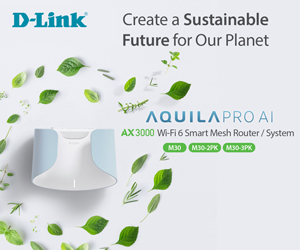The Bluetti AC70 1000W/768Wh portable power station is a new, lighter portable power station that can take a 1000W load and peak up to 2000W with ‘Power Lifting’.
Think of the Bluetti AC70 as providing 100W of 240V power for nearly 7 hours or powering a portable 50W fridge/freezer for twice as long. Hook it up to portable solar panels, and you can have power all day and night.
You may notice that this is an off-grid review (a new category for CyberShack) because that is precisely what a portable power station can do – provide 240V, 12V and USB energy and be recharged by 240V, 12VDC, Solar or dual charging. You can read our guide, Portable Power Stations – power on the go.
We are becoming quite experts at off-grid reviews. Our test panellists include a boat owner (large cruiser), a hardened bush hiker, a 4WD camper, a motorhome owner, a tradie, and a bush home where power blackouts occur regularly due to wind and fallen trees.
Each has its uses, whether it is a small portable or a larger capacity power station.
For example
- Cruiser only has 12V DC power outlets, so he can use it to power a TV/Monitor, Computer/Media centre, and charge smart phones and walkie-talkies. He tried the AC2A, which is perfect for overnight use, but he will likely buy the AC200L as he is now planning longer trips and wants to use a 1500W kettle for tea.
- Hiker uses the small, light Bluetti AC2A 300W/204.8Wh – a pint-sized portable power station to power LED lights in the evening and to recharge his smart phone and tablet. He has just bought a swag-style rollable solar panel that hangs off the backpack.
- 4WD Camper uses the AC60 and PV200 solar panels. He perpetually travels around Australia and reports that he never runs out of power with a DC-powered 32L fridge, night lighting, tablet/phone charging, etc. He charges from the car socket when on the move or solar panels when camped.
- Motorhome has 240V at a powered campsite but uses a larger unit for power when there is none. He also has a DC-powered 50-litre BourgeRV 50L portable freezer or fridge that is powered 24/7 from it. He has connected 400W of roof-mounted solar panels directly to it as it has an MPPT controller. He says it is a lower cost than buying a separate MPPT, battery and inverter and provides more information on power use.
- Tradie uses the BLUETTI AC60 600W/403Wh portable power station to recharge battery power tools. It has been so successful that he is also looking to buy the AC200L 2400W/2048Wh to run a portable fridge.
- Blackout uses the AC2A as a UPS (uninterruptible power supply) for their NBN modem/router (internet and landline), laptop, and emergency lighting. As blackouts seldom last more than an hour, the AC2A is fine. She is looking to get another AC2A for her husband’s CPAP.
How I use the Bluetti AC70 (as a reviewer)
I use the Bluetti AC70 as a UPS (20ms cut-over and pure sine wave protects sensitive electronic equipment), a convenient source of 12V DC (car socket) to test DC devices, and USB-A and USB-C charging. We don’t get many blackouts, but the last was over four hours, and we had TV and internet – we can’t live without streaming! We also use the AC2A to power a 50L car fridge/freezer when we do ‘big shops’ at Coles and Woollies – it keeps everything cold or frozen. And it is great to ue around the pool or beach to power speakers and the small fridge.
Not one of the test panellists had a portable power station before. I guess what I am saying is that you can find a need for an appropriately sized portable power station anywhere.
I never realised how useful, no, indispensable, a portable power station is for camping, blackouts, and stable portable power out and about and at home. It is my must-have of the year.
Brad T
Australian Review: BLUETTI AC70 portable power station
| Website | Range Product page User manual |
| Price 8/2/24 | RRP $1099 but currently on sale to 18/2/24 at $899 MP200 solar panel RRP $799 but on sale at $649 PV350 solar panel RRP $1399 but on sale at $1199 PV420 solar panel RRP $1499 but on sale at $1399 There may be bundle pricing on the website. The Bluetti AC series includes 300W/204Wh, 1000W/768Wh, 1800W/1152Wh, 2000W/2048Wh and 2400W/2048Wh all with Power Lifting. Free shipping |
| From | BLUETTI Online, Harvey Norman, Bunnings, and approved retailers. Beware – do not buy internationally sourced products, as they will not have RNZ C-Tick certification or local warranty. |
| Warranty | Five years ACL – above industry standards |
| Made in | China |
| Company | Established in 2019, it is based in Las Vegas, Nevada. BLUETTI stands for BLUE Sky. Tomorrow. Technology. Innovation. It is owned by the Chinese company Shenzhen PowerOak (Established in 2013). It now supplies over 70 countries. |
| More | CyberShack portable power station news and reviews |
We use Fail (below expectations), Passable (meets low expectations), Pass (meets expectations), Pass+ (near Exceed but not class-leading) and Exceed (surpasses expectations or is the class leader) against many of the items below. You can click on most images for an enlargement.
First impression – Pass+
We are used to the no-nonsense Bluetti approach – an ABS-textured case with a rugged feel, an integrated top handle, clearly labelled front ports, and a right-side 240V charging input and ground socket (not required unless you permanently install it).
On the front is an informative colour LCD screen, three buttons below (On, USB and AC) and various ports (see later). A vent on either side is for fan cooling (see noise later).
It is 314mm × 209.5mm × 255.8mm x 10.2kg – quite luggable.
Economics- Exceed
- Cost per watt hour $1.17 at $899 on special or $1.43 at RRP – excellent.
- Cost per full recharge cycle: 30 cents at $899 or 37 cents at RRP – excellent.
Setup – App or built-in settings menu – Pass+
You don’t need to use the Bluetooth App, but it is the only way to update firmware. It is benign, only collecting information required to set up and offer an easier way to control the power station. As it is Bluetooth, you can use it anywhere – no internet connection is required.
Advanced Settings: AC frequency (50Hz for AU) and Grid Self-adaption (if you charge it with an unstable AC source like a generator). The screenshots below are self-explanatory.
On-device, you can press and hold the DC and AC buttons to enter the settings menu. The DC button then cycles through mains frequency, charging speed, Power Lifting mode, Eco mode, and Bluetooth. The AC button selects each setting.



LCD – informative – Pass+

Ports and output tests – plenty – Pass+
- 2 x USB-C 5/9/12/15/20V, 3A; 20V/5A total shared 100W max (tested 94W single and 65/35 both -depends on attached devices)
- 2 x USB-A 5V/2.4A/12W (tested 12.3W)
- 2 X 240v – total 1000W (tested 994W)
- 1 X Car utility socket 12V/10A/120W (tested 120W)
- Ground the AC70 for a more permanent installation.
- 240V input socket (tested 950W fast charge)
Battery Expansion – Pass
The AC70 is compatible with B80/B230/B300 batteries. We could not test this, but understand that these batteries top up the main battery.
Modes – Pass+
Silent/Eco/Turbo and Fast modes are mainly about charging speed (see charging tests later).
Eco (default) will turn the unit off if the AC/DC output is less than 40W (or the set power) or there is no load for a defined time.
The Battery pack
It uses a LiFePo4 technology battery- 768Wh (32V/24Ah). This is a safer battery than Lithium-Ion, and we won’t review any using it due to the potential for fire and thermal runaway. Read: Is there a safe way to charge Lithium-ion batteries?
After 3000+ cycles (about 8.2 years of daily charging), it still retains 80% capacity.
If you haven’t used the unit for some time, charge it to 80% and check and top up every few months.
Charging Tests – Exceed
- 272W Silent mode 240V approx. 4 hours
- 433W Standard Eco charge 240V approx. 2 hours
- 850W Turbo charge 240V approx. 1.5 hours
- 500W solar (not tested) approx. 3 hours. The AC70 has a built-in MPPT controller capable of accepting 12-58VDC, 10A. You can use Bluetti Solar panels with an efficiency rating of up to 23.4%, including PV350 (46.5V/350W) or 2x MP200 (22.9V/200W each, a total of 400W) or PV420 (44.3V/420W) – add extra time.
- 12V/0A DC with the car running approx. 6.5-7hours (depends on alternator overvoltage)
- Dual charge solar and AC (prioritises solar)
- Pass-through power (charge by any method and discharge simultaneously)
Discharge Tests – Exceed
Remember that 240V uses the inverter, which consumes about 15W per hour. So if you have a 100W device, the draw is 115W, e.g. The device also defaults to 90% depth of discharge (DoD) (improves battery longevity), but you can go to 100% and an estimated 85% inverter efficiency (IE).
Operation time = 768Wh × 90% (DoD) × 85% (IE)÷ (load 100W + 15W) = 5.1 hours. If you use DC, then the IE does not occur.
- 240V energy use: TV drawing an average of 150W – 675W for 4.5 hours – approx. 87% efficiency is excellent.
- 12V energy use: 50W portable fridge for 15 hours – no inverter used.
Power Lifting to 2000W – Pass
We tested with a 1500W kettle, but as expected, the unit simply did not work as the jug constantly draws 1500W.
We test the power lift with an old compressor fridge that starts over 1000W (pass)
UPS (uninterruptable power supply) mode – Pass+
The 20-ms cutover (tested 14-ms) is perfect for electronic equipment. The pure sine wave output is far better for that than mains power.
Safety – Exceed
LiFePo4 batteries are safer and do not succumb to thermal runaway. Nevertheless, you should observe care when charging.
In addition, it has protection against overtemperature, short circuits, overload and low voltage.
IP Rating – none
The new 2024 AC series does not have an IP rating, which means that it should not be left out in the rain or the elements.
Noise/Heat – Pass+
It is about 38 dB in silent charge mode. The noise increases progressively to 40/47/50dB in Eco, Turbo, and Fast charge modes or when using the AC inverter. It is not a constant noise.
The fan exhaust seldom reaches 40° – most of the time, it is close to ambient temperature.
It does not have an IP rating, so it must be kept under cover at all times.
Maintenance – Pass
Theoretically, you should be able to replace or repack the batteries–but that’s probably ten years away.
Use caveats
- It is a 1000W pure sine wave inverter and can power lift to 2000W momentarily. It achieves this by lowering the voltage. Ohms Law – Volts X Amps = Watts. Use this feature sparingly, as it can create undue heat.
- If you plug in too much load, it switches off. To reset, turn it on and press AC.
- Turn off the AC inverter when unused, as it consumes about 15W of energy per hour. Eco mode only has user-definable auto shut-off time (1-4 hours of no use)
- DC mode does not use the inverter. We tested using AC and DC on a 50W portable refrigerator and achieved about 15% longer use on DC.
- The ambient charging temperature can be between 0 and +40°, but it can discharge to -20°. The reminder here is that the interior of a locked car can easily reach 80° in 15 minutes (based on 30° ambient). Road users need to be aware.
Bluetti AC70 inbox – Pass+
AC Charging Cable, Car Charging Cable, Solar Charging Cable

CyberShack’s view – Bluetti AC70 1000W/768Wh portable power station gives more power for a great price.
I am asked what the best portable power station brand is. We have tested Bluetti, Anker, EcoFlow and NRGVault. I would buy any of these. Bluetti offers a compelling case with well-made gear, an excellent 5-year warranty, wide range, good support, solar panel options and low cost per Wh and charge cycle.
We won’t test any power station that uses Lithium-ion batteries (including well-known brands like Jackery and Energiser) or does not have R-NZ C-Tick certification. Nor will we touch the plethora of low-cost Chinese power stations that beg us for reviews.
Bluetti AC70 rating
- Features: 90- The AC series is about value, and that means no IP rating, no Qi charge pad, LED light strip, etc., which you won’t miss either. It is a good, honest performer.
- Value: 95 – especially if you get it at $899. It has one of the lowest costs per Watt hour and per full battery recharge cycle.
- Performance: 95 – It meets or exceeds stated performance levels with a very high 87% inverter efficiency and even better DC performance.
- Ease of Use: 95 – It is plug-and-play with simple push buttons. Use the App to update firmware and perhaps refine options. The 5-year warranty is class-leading.
- Design: 85 – It loses points for not having an IP rating; otherwise, it is well-designed and has a very informative readout.
Bluetti AC70
CyberShack Verdict
Bluetti AC70 1000W/768Wh portable power station
RRP $1099













Comments